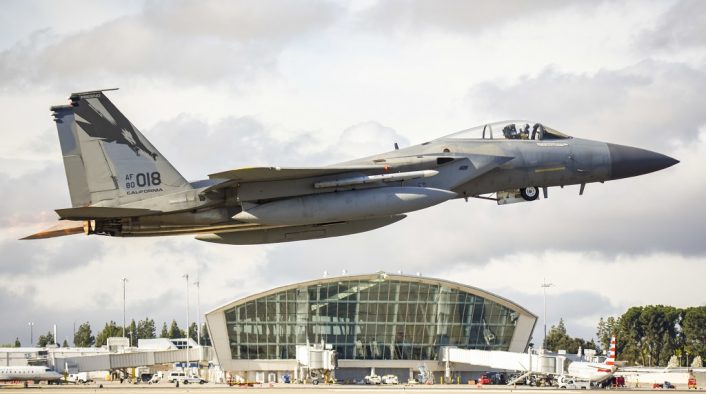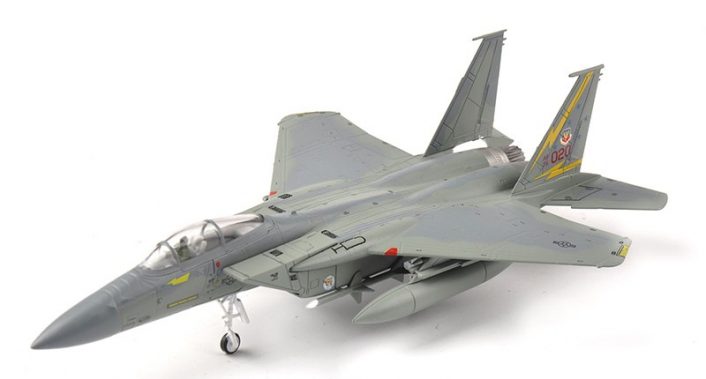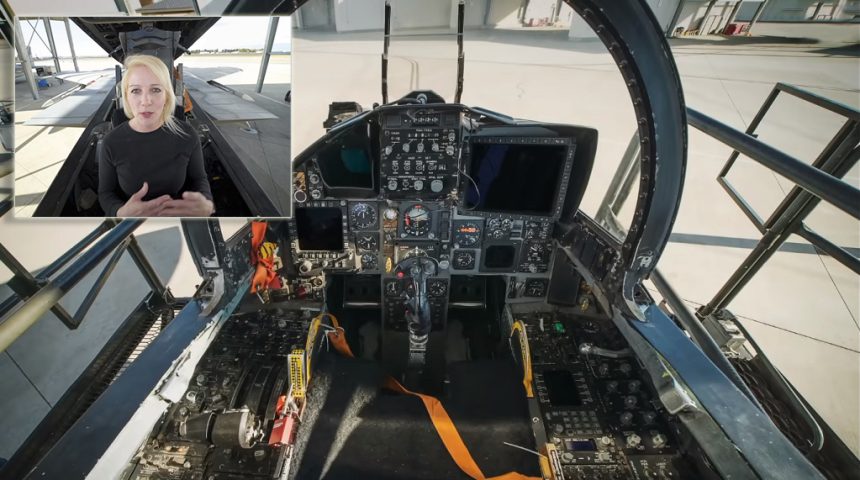Take a tour of the F-15C cockpit with a former Eagle pilot.
On June 30, 2020, the Ars Technica YouTube channel published and interesting tour of the F-15C Eagle cockpit in the latest upgraded version, that features also a new multifunctional display. The cockpit tour, which features an F-15C of the 144th Fighter Wing of the California Air National Guard, is hosted by retired United States Air Force Col. Andrea Themely, a former pilot with over 3400 flight hours in her 23 year long career, including 1100 flight hours in the Eagle.
Col. Themely starts off her tour breaking down the cockpit’s over 250 buttons and features based on their function: most used features, emergency features, weapons and defense, cockpit customization, navigation and communications and backup features.
To optimize the Human Machine Interface, the most used features are placed right in front of the pilot. Those are the Head Up Display (HUD), the radio, the Attitude Directional Indicator (ADI), the Horizontal Situational Indicator (HSI), the Hands On Throttle And Stick flight controls and the rudder pedals. These features are required for the basic conduct of the jet. In the same category we can find also the main combat systems’ displays, like the Vertical Display Indicator (VDI), which shows radar data, the Multi-Purpose Color Display (MPCD), which shows various aircraft weapons, navigation and system information, and the new Passive Attack Display (PAD).
The PAD is a quite recent upgrade, seen for the first time in 2018, which replaces the Radar Warning Receiver (RWR) display and engine gauges with a 9×11 inch multi-function color display which shows, other than the indicators it replaced, the video feed from the AN/AAQ-33 Sniper Advanced Targeting Pod mounted on the centerline pylon under the fuselage, introduced with the Passive Attack Sensor System (PASS) program to allow Eagle pilots to perform long-range Visual Identification (VID), either during Quick Reaction Alert duties or any other combat scenario, and a secondary role of Non-Traditional Information, Surveillance and Reconnaissance (NTISR).
After explaining the emergency features, Col. Themely starts talking about the weapon systems of the F-15C by introducing us first to the HOTAS control. An interesting fact she mentions is the origin of the name “pickle switch” used to refer to the weapon employment switch on the flight stick. The name has a 75-year heritage as it is due to the World War 2 B-17’s bomber sight, which was considered so accurate to be able to “hit pickles out of a pickle barrel”. The switch is the one used to launch the IR-guided AIM-9 Sidewinder and the radar-guided AIM-120 AMRAAM, which are the main weapons of the F-15C along with the M61A1 Vulcan Gatling cannon, loaded with 940 rounds of 20mm ammo.

The tour continues with a description of the Environmental Control System (ECS), radio and navigation equipment, and the backup features used by the pilots in the event of some emergencies, like the standby flight instruments and the three independent hydraulic systems.
The final part is what we could consider the easiest part of the flight for a pilot, the engine startup, which relies on the use of a Jet Fuel Starter (JFS) coupled to the two Pratt & Whitney F100-PW-220 engines. The JFS is needed for the startup as a jet engine needs a constant air stream to flow in the compressor stages, where the air is brought to a 25:1 pressure ratio before being used in the combustion chambers to burn the JP-8 fuel, resulting in the exhaust gases that keeps the turbine stages in motion. When the aircraft is parked on the ground there isn’t that necessary air flow and the JFS, which we can describe as a scaled down jet engine, is spun by a hydraulic motor powered by compressed nitrogen (less dangerous than the hydrazine used by the F-16’s EPU) stored in two hydraulic accumulators. Once the JFS takes the engines’ shafts to 18% RPM (Revolutions Per Minute), the pilot will introduce fuel by moving the throttles to idle, starting the combustion that will finally power up the engines.
You can watch the full cockpit tour in the video posted here or in the Ars Technica YouTube channel.










